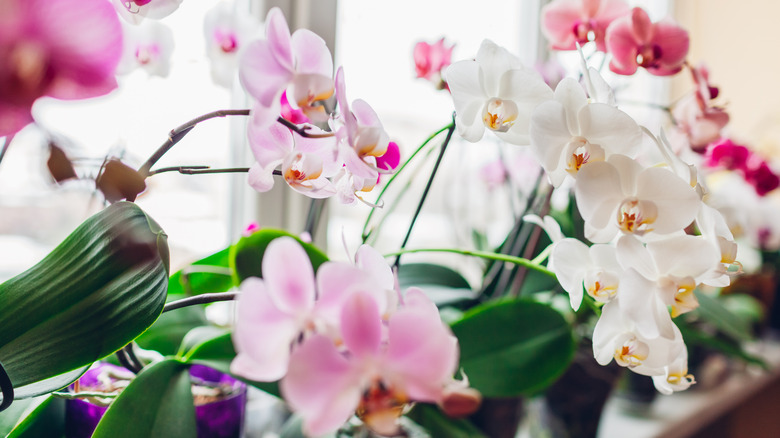How Often Orchids Should Bloom, And How To Encourage Them If They're Not
Orchids (Orchidaceae spp.) are very popular flowers due to their gorgeous, long-lasting blooms and striking looks. If you are new to growing orchids, there are some beginner tips for choosing the right type of orchid to grow and care for that will give you the best chance of success. How often your orchid should bloom each year depends on the variety you choose. One of the most common types, the moth orchid (Phalaenopsis),typically blooms once or twice per year. Dendrobium orchid is another option that, depending on the variety you choose, can bloom several times per year with flowers lasting for several months. If your orchid isn't following its normal blooming rhythm, adjustments to light, watering, and temperature cues can get it back on track.
When an orchid refuses to bloom, it's usually responding to some kind of stress whether due to a health problem, insufficient sunlight, or missing blooming cues. Under or overwatering, cramped roots, improper temperatures, and improper fertilizing could also be the culprits. You can sometimes encourage blooming by ensuring the plant receives the right amount of light, appropriate watering, and mimicking of key temperature fluctuations. During the colder months, make sure they get less water than the summer months, have the right humidity, and are experiencing cooler temperatures. These parameters will keep your orchids healthy and happy all winter. With good health and the right growing conditions in place, most orchids will return to the typical blooming cycle for their variety.
How to encourage your orchids to bloom
If your orchids aren't blooming, first consider the amount of light they are receiving. Orchids need to make carbohydrates in order to bloom and grow but can't do so with insufficient sunlight. Although light needs vary with different orchid types, most orchids need six to eight hours of indirect light daily. Direct sunlight can actually sunburn your orchids so be sure to choose a spot near an east- or north-facing window, which usually provides the right balance of light. If you use LED grow lights for your orchids, set a timer to mimic natural day and nighttime cycles.
There are two main cues that orchids need that will encourage blooming: Decreasing daylight hours that occur in the fall, and an increase in the temperature between daytime and nighttime. When grown outdoors, the natural cycle that happens as the seasons change and provide these cues, but indoors you will need to make sure the orchids are in a place where they can sense these cues. Place your orchids near a window or in a bow or bay window, where they can feel the temperature drop at night and sense the shorter daylight hours. You can also physically move them to a cooler part of the house each night, such as your garage. Successfully care for indoor orchids means having these factors dialed in for best results.

